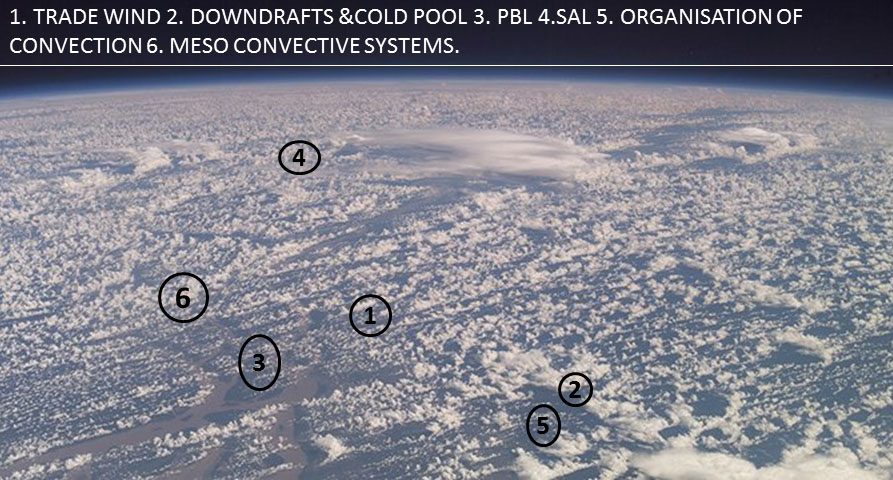HOME
CPEX 2017: A Field Experiment to study Convective Processes in the Tropics
The idea for the CPEX field campaign was originated at the NASA Headquarters. A science team was competitively selected on the basis of ROSE16 (Research Opportunities in Space and Earth Science 2016) Research Element A.23. Dr. Ramesh Kakar, Program Manager for the Atmospheric Dynamics Program, developed this element and conducted the process for selecting the CPEX science team. The CPEX science objectives are established by the team.
Science Objectives
- Improve understanding of convective processes including cloud dynamics, downdrafts, cold pools and thermodynamics during initiation, growth, and dissipation. Determine what combinations of environmental structure, including moist entropy budgets, and convective properties such as vertical velocity and reflectivity profiles, result in rapid upscale growth of a convective system into a large organized mesoscale convective system (MCS), or alternatively, result in failure to grow or rapid decay.
- Obtain a comprehensive set of simultaneous wind, temperature, and moisture profiles, using wind lidar, microwave radiometer and sounder, and GPS dropsondes, conduct a quantitative evaluation of those profiles in the vicinity of scattered and organized deep convection, especially in the lowest 4 km, in all phases of the convective life cycle.
- Improve model representation of convective and boundary layer processes over the tropical oceans using a cloud-resolving, fully coupled atmosphere-ocean model. Assimilate the wind, temperature and humidity profiles from the wind lidar and dropsondes into the model, and quantify the impact of these detailed lidar wind profiles on the ability of the model to simulate the life cycle of convective systems over tropical oceans.

What's New
For the first time on a single research aircraft, the DC-8 will have a suite of instruments with the capability of detailed wind, temperature, and humidity profiles beneath the aircraft at horizontal resolution of a few kilometers, potentially enabling CPEX scientists to obtain essential details of atmospheric structure, together with dual-frequency Doppler radar data for structure of storms, to observe the evolution of convective storm systems together with their evolving environment.Science Team
- Shuyi Chen (University of Miami) and Ed Zipser (University of Utah), team leaders
- Stephen Durden (JPL)
- Dave Emmitt (Simpson Weather Associates)
- Svetla Hristova-Veleva (JPL)
- Michael Kavaya (NASA LARC)
- T.N. Krishnamurti (Florida State University)
- Bjorn Lambrigtsen (JPL)
- Guosheng Liu (Florida State University)
- David Raymond (New Mexico Tech)
- Hui Su (JPL)
- Simone Tanelli (JPL)
- Joe Turk (JPL)
Main observational tools to be used in this investigation:
- 100 Flight Hours on the NASA DC-8 aircraft, equipped with
- Doppler Wind Lidar (DAWN) for wind retrievals (PIs: Michael Kavaya, Dave Emmitt)
- Doppler Radar (APR-2) for convective precipitation structure (PIs: Stephen Durden, Simone Tanelli)
- Dropsondes for thermodynamic and wind profiles beneath the aircraft (PI: Dave Emmitt)
- Microwave radiometer (HAMSR) and Microwave Atmospheric Sounder (MASC) for retrieval of thermodynamic profiles beneath the aircraft (PI: Bjorn Lambrigtsen)

